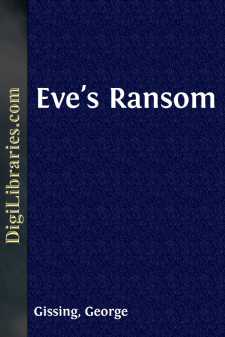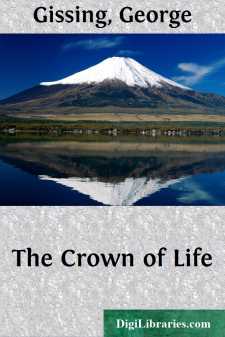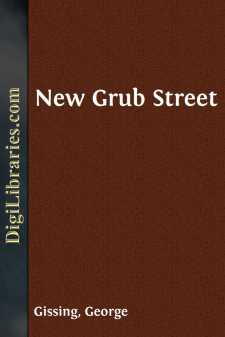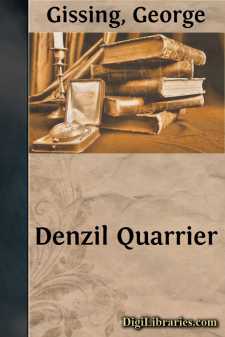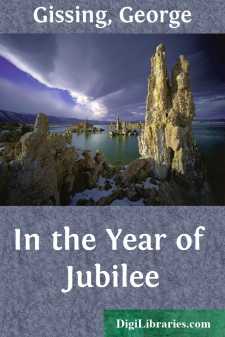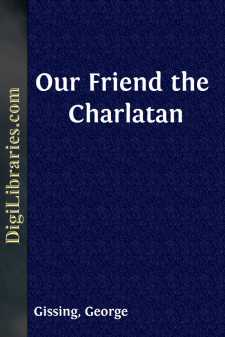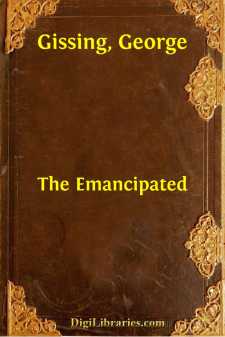Categories
- Antiques & Collectibles 13
- Architecture 36
- Art 48
- Bibles 22
- Biography & Autobiography 813
- Body, Mind & Spirit 142
- Business & Economics 28
- Children's Books 16
- Children's Fiction 13
- Computers 4
- Cooking 94
- Crafts & Hobbies 4
- Drama 346
- Education 46
- Family & Relationships 57
- Fiction 11829
- Games 19
- Gardening 17
- Health & Fitness 34
- History 1377
- House & Home 1
- Humor 147
- Juvenile Fiction 1873
- Juvenile Nonfiction 202
- Language Arts & Disciplines 88
- Law 16
- Literary Collections 686
- Literary Criticism 179
- Mathematics 13
- Medical 41
- Music 40
- Nature 179
- Non-Classifiable 1768
- Performing Arts 7
- Periodicals 1453
- Philosophy 64
- Photography 2
- Poetry 896
- Political Science 203
- Psychology 42
- Reference 154
- Religion 513
- Science 126
- Self-Help 84
- Social Science 81
- Sports & Recreation 34
- Study Aids 3
- Technology & Engineering 59
- Transportation 23
- Travel 463
- True Crime 29
Demos
by: George Gissing
Description:
Excerpt
CHAPTER I
Stanbury Hill, remote but two hours' walk from a region blasted with mine and factory and furnace, shelters with its western slope a fair green valley, a land of meadows and orchard, untouched by poisonous breath. At its foot lies the village of Wanley. The opposite side of the hollow is clad with native wood, skirting for more than a mile the bank of a shallow stream, a tributary of the Severn. Wanley consists in the main of one long street; the houses are stone-built, with mullioned windows, here and there showing a picturesque gable or a quaint old chimney. The oldest buildings are four cottages which stand at the end of the street; once upon a time they formed the country residence of the abbots of Belwick. The abbey of that name still claims for its ruined self a portion of earth's surface; but, as it had the misfortune to be erected above the thickest coal-seam in England, its walls are blackened with the fume of collieries and shaken by the strain of mighty engines. Climb Stanbury Hill at nightfall, and, looking eastward, you behold far off a dusky ruddiness in the sky, like the last of an angry sunset; with a glass you can catch glimpses of little tongues of flame, leaping and quivering on the horizon. That is Belwick. The good abbots, who were wont to come out in the summer time to Wanley, would be at a loss to recognise their consecrated home in those sooty relics. Belwick, with its hundred and fifty fire-vomiting blast-furnaces, would to their eyes more nearly resemble a certain igneous realm of which they thought much in their sojourn upon earth, and which, we may assure ourselves, they dream not of in the quietness of their last long sleep.
A large house, which stands aloof from the village and a little above it, is Wanley Manor. The county history tells us that Wanley was given in the fifteenth century to that same religious foundation, and that at the dissolution of monasteries the Manor passed into the hands of Queen Catherine. The house is half-timbered; from the height above it looks old and peaceful amid its immemorial trees. Towards the end of the eighteenth century it became the home of a family named Eldon, the estate including the greater part of the valley below. But an Eldon who came into possession when William IV. was King brought the fortunes of his house to a low ebb, and his son, seeking to improve matters by abandoning his prejudices and entering upon commercial speculation, in the end left a widow and two boys with little more to live upon than the income which arose from Mrs. Eldon's settlements. The Manor was shortly after this purchased by a Mr. Mutimer, a Belwick ironmaster; but Mrs. Eldon and her boys still inhabited the house, in consequence of certain events which will shortly be narrated. Wanley would have mourned their departure; they were the aristocracy of the neighbourhood, and to have them ousted by a name which no one knew, a name connected only with blast-furnaces, would have made a distinct fall in the tone of Wanley society....



